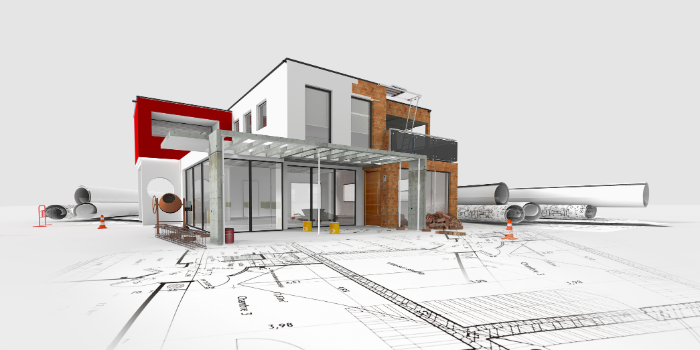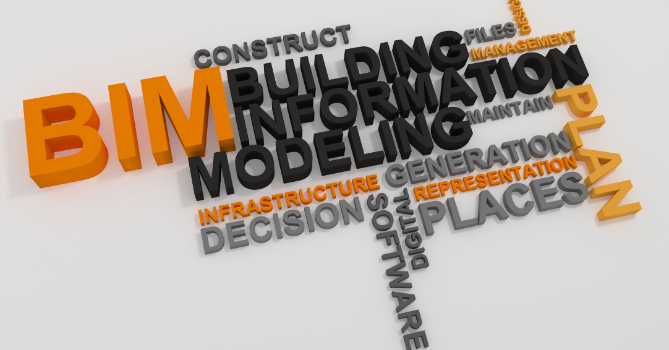
From 2D Drafting to 3D Mastery: The BIM Revolution
Hey there! Today, we're diving into the fascinating world of Building Information Modeling, or BIM for short. Imagine a tool that takes building design to a whole new level, from basic sketches to detailed 3D models. That's what BIM does. It's like the superhero of the architecture and construction world, making projects smoother and more efficient.
In this blog, we'll explore how BIM has evolved over the years, starting from simple 2D drawings to the complex 3D modeling we see today. Get ready to discover how this technology is shaping the future of architecture and construction. So, buckle up and let's embark on this exciting journey through the evolution of BIM!
Back in the 1970s, architects and engineers were relying on 2D CAD systems for their designs. These systems were like digital drawing boards, helping them create basic floor plans and elevations. But as technology marched on, so did the need for something more advanced.
Enter Building Information Modeling, or BIM. It wasn't an overnight sensation, though. It took years of innovation and development to get to where we are today. In the 1980s and 1990s, early versions of BIM started popping up, allowing architects to work in three dimensions instead of just two.
Fast forward to the 2000s, and BIM really started gaining traction. With the rise of powerful computers and software, architects could now create detailed 3D models that not only showed what a building looked like but also how it functioned. This was a game-changer for the industry, revolutionizing the way projects were designed and constructed.
Today, BIM has become an essential tool for architects, engineers, and construction professionals around the world. It's no longer just about drawing lines on a screen; it's about creating digital replicas of buildings that can be analyzed, simulated, and optimized in ways we never thought possible. And the best part? We're only scratching the surface of what BIM can do. The future is bright, indeed!
Implementing BIM might sound daunting, but fear not! We've got some tried and true tips to help you along the way.
First things first, get everyone on board. That means architects, engineers, contractors—everyone. BIM works best when everyone's on the same page, so make sure everyone understands the benefits and is committed to making it work.
Next up, invest in training. BIM software can be complex, so it's crucial to provide your team with the training they need to use it effectively. Whether it's online courses, workshops, or hands-on training sessions, investing in education will pay off in the long run.
Communication is key. Make sure everyone knows who's responsible for what and keep the lines of communication open at all times. Regular meetings and check-ins can help prevent misunderstandings and keep the project moving smoothly.
Don't forget about standards and protocols. Establishing clear standards for how BIM will be used on your projects is essential for consistency and efficiency. Make sure everyone knows the protocols for naming files, organizing models, and sharing information.
Collaborate, collaborate, collaborate. BIM is all about collaboration, so make sure your team is working together every step of the way. Use cloud-based platforms to share models and data in real-time, allowing everyone to contribute and collaborate seamlessly.
And finally, don't be afraid to start small. You don't have to implement BIM on every project right away. Start with a pilot project to test the waters and learn what works best for your team. Once you've got the hang of it, you can start rolling it out on larger projects.
By following these best practices, you'll be well on your way to harnessing the power of BIM and revolutionizing the way you design and construct buildings. So, what are you waiting for? Let's get started!

BIM technology is constantly evolving, and there's no shortage of exciting innovations on the horizon. One of the most significant trends in recent years is the move towards cloud-based collaboration. Instead of working on isolated desktop computers, architects, engineers, and contractors can now collaborate in real-time, sharing models and data over the internet. This not only improves communication and coordination but also allows for more efficient workflows and faster decision-making.
Artificial intelligence (AI) is another game-changer in the world of BIM. AI-powered algorithms can analyze vast amounts of data to identify patterns, optimize designs, and even predict potential issues before they arise. This not only saves time and money but also improves the overall quality and performance of buildings.
Virtual reality (VR) and augmented reality (AR) are also transforming the way architects and designers interact with their models. Instead of viewing static 3D models on a computer screen, they can now immerse themselves in virtual environments, allowing for a more intuitive and immersive design process. This not only makes it easier to visualize designs but also allows for more meaningful client engagement and feedback.
And let's not forget about generative design. This cutting-edge technology uses algorithms to explore thousands of design options based on specific parameters such as site conditions, building codes, and project goals. This allows architects and engineers to quickly generate and evaluate alternative design solutions, leading to more innovative and efficient buildings.
The future of BIM technology is bright, with new advancements and breakthroughs happening all the time. From cloud-based collaboration to artificial intelligence, virtual reality, and generative design, the possibilities are endless. By staying up-to-date with the latest trends and innovations, you can harness the full potential of BIM technology and stay ahead of the curve in the ever-evolving world of architecture and construction.
Let's break down the four stages of BIM adoption:
Awareness: The first stage of BIM adoption is awareness. This is where organizations recognize the potential benefits of BIM and start to learn more about what it can do for them. It's about understanding the basics of BIM and how it can improve collaboration, reduce errors, and streamline workflows.
Implementation: Once awareness has been established, it's time to start implementing BIM into your organization. This involves investing in the necessary software and hardware, as well as providing training for your team. It's also important to develop BIM standards and protocols to ensure consistency and efficiency across projects.

Integration: The next stage is integration, where BIM becomes an integral part of your organization's processes and workflows. This involves integrating BIM into every stage of the project lifecycle, from initial design through construction and facility management. It's about breaking down silos and fostering collaboration between different teams and disciplines.
Optimization: The final stage of BIM adoption is optimization. This is where organizations leverage BIM to its full potential, using advanced features and tools to optimize their workflows and achieve better outcomes. It's about continuously improving and refining your BIM processes to stay ahead of the competition and deliver the best possible results for your clients.
Throughout each stage of BIM adoption, it's important to focus on continuous learning and improvement. BIM is a dynamic and evolving technology, and there's always something new to learn and explore. By staying curious and open-minded, you can harness the full potential of BIM and drive innovation in your organization.
Remember, BIM adoption is not a one-size-fits-all process. Every organization is unique, with its own goals, challenges, and priorities. It's important to tailor your approach to BIM adoption to fit your organization's specific needs and circumstances.
By following these four stages of BIM adoption – awareness, implementation, integration, and optimization – you can set your organization up for success and unlock the full potential of BIM technology. So, what are you waiting for? It's time to take the next step on your BIM journey and embrace the future of construction technology!
In conclusion, the evolution of Building Information Modeling has been nothing short of remarkable. From its humble beginnings in 2D CAD systems to the sophisticated technology we see today, BIM has revolutionized the architecture and construction industry in ways we never thought possible.
As we've seen, BIM is more than just a tool for drawing buildings; it's a powerful platform for collaboration, innovation, and optimization. By embracing BIM and following best practices for implementation, organizations can streamline their workflows, improve project outcomes, and stay ahead in an increasingly competitive market.
So, whether you're just starting to explore the possibilities of BIM or you're already a seasoned pro, the future is bright. By harnessing the full potential of BIM technology, we can continue to push the boundaries of what's possible and create a built environment that is smarter, more efficient, and more sustainable for generations to come.